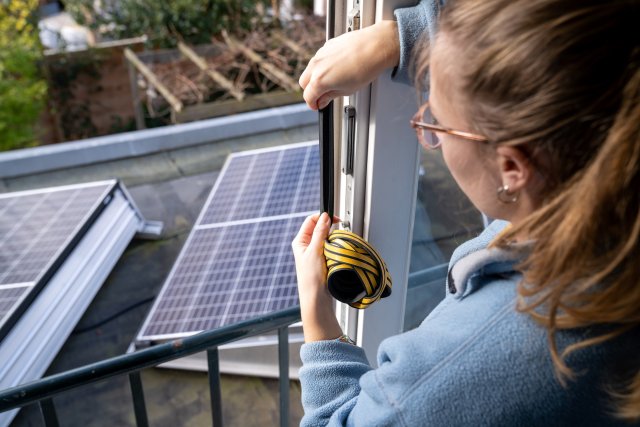What You Can Do About Climate Change — Energy
On this page:
Energy efficiency reduces energy bills by lowering energy use, making it more affordable for families and businesses. It is also one of the most cost-effective ways to reduce air pollution and reduce greenhouse gas emissions. In the United States, the burning of fossil fuels for electricity and heat accounts for a significant amount of greenhouse gas emissions.
Actions You Can Take to Use Energy Wisely
Embrace Energy Efficiency

Energy efficiency is about using less energy to get the same job done, which lowers energy bills and reduces pollution. EPA's ENERGY STAR program is a great place to learn more about how products for your home and office can help you save energy, save money, and protect the environment. Products that earn the ENERGY STAR label are independently certified to meet strict standards for energy efficiency.
-
Look for the ENERGY STAR label on certified products for your home including appliances, heating and cooling equipment, office equipment, and more. The ENERGY STAR Product Finder can help you find certified products and show you where you can purchase them.
-
Consider an ENERGY STAR Home Upgrade. This carefully crafted set of six high-impact, energy efficiency improvements for your home are designed to work together to deliver significant energy and cost savings and can also help you transition from fossil fuels for a cleaner, healthier, and more comfortable home. Choose the improvements that make the most sense for your home and implement them at your own pace.
-
Visit the ENERGY STAR Home Savings Tool. This zip-code based resource highlights utility rebates and federal tax credits and includes state rebates for home efficiency improvements as they become available. It’s your one-stop-shop for buying guidance, information on eligible products, and links to local retailers and installers.
-
Federal tax credits are available to homeowners that will allow up to $3,200 annually to lower the cost of several energy efficient home upgrades by up to 30 percent.
- Save up to $2,000 on the costs of upgrading to Heat Pump Technology (heat pump HVAC and heat pump water heaters).
- Save Up to $1,200 on other Energy Efficiency Home Improvements (windows, insulation, a home energy audit, and more).
-
Heat and cool your home smartly by:

- Properly sealing and insulating your home.
- Maintaining your heating and cooling equipment.
-
Consider an ENERGY STAR certified house or apartment. They are designed and built to standards well above most other homes on the market today.
-
Outdoor changes can help with energy efficiency, too. Consider improvements such as rooftop gardens, cool roofs, and sustainable landscaping.
Change Your Habits to Save Energy
While big changes are important, small steps do add up for saving energy and money. Consider the following:
-
Adjusting thermostats. In the winter, the Department of Energy suggests setting your thermostat to 68-70°F while you are home during the day and lowering it by 8-10°F while you are away or asleep. In the summer, you can do the reverse: allow your house to be warm while you are away and lowering the temperature when you are home.
-
Turning off lights when space is unoccupied and unplugging electronics when not in use.
-
Adjusting window shades to reduce heating and cooling requirements.
Explore Green Power Options in Your Area
-
Switch to green power generated from renewable energy sources like solar, wind, and hydropower.
-
You can also consider rooftop solar or other self-supplied green power. Visit EPA’s Power Profiler to learn about the air emissions impacts of your locally provided electricity.
Actions Organizations Can Take
-
Increase the energy performance of your workplace by using ENERGY STAR resources for buildings and plants.
-
Procure ENERGY STAR certified products for your workplace, including office and data center equipment, building products, heating and cooling systems, water heaters, food service equipment, and electric vehicle chargers.
-
Green your workplace with the help of rooftop gardens and cool roofs, sustainable landscaping, and renewable energy technologies such as solar panels.
-
Buy green power generated from renewable energy sources like solar, wind, and hydropower. EPA's Green Power Partnership can help your organization reduce its environmental impact.
More Resources about Energy Saving:
-
Department of Energy’s Energy Saver Guide: Tips on Saving Money and Energy at Home (pdf) (3 MB)
